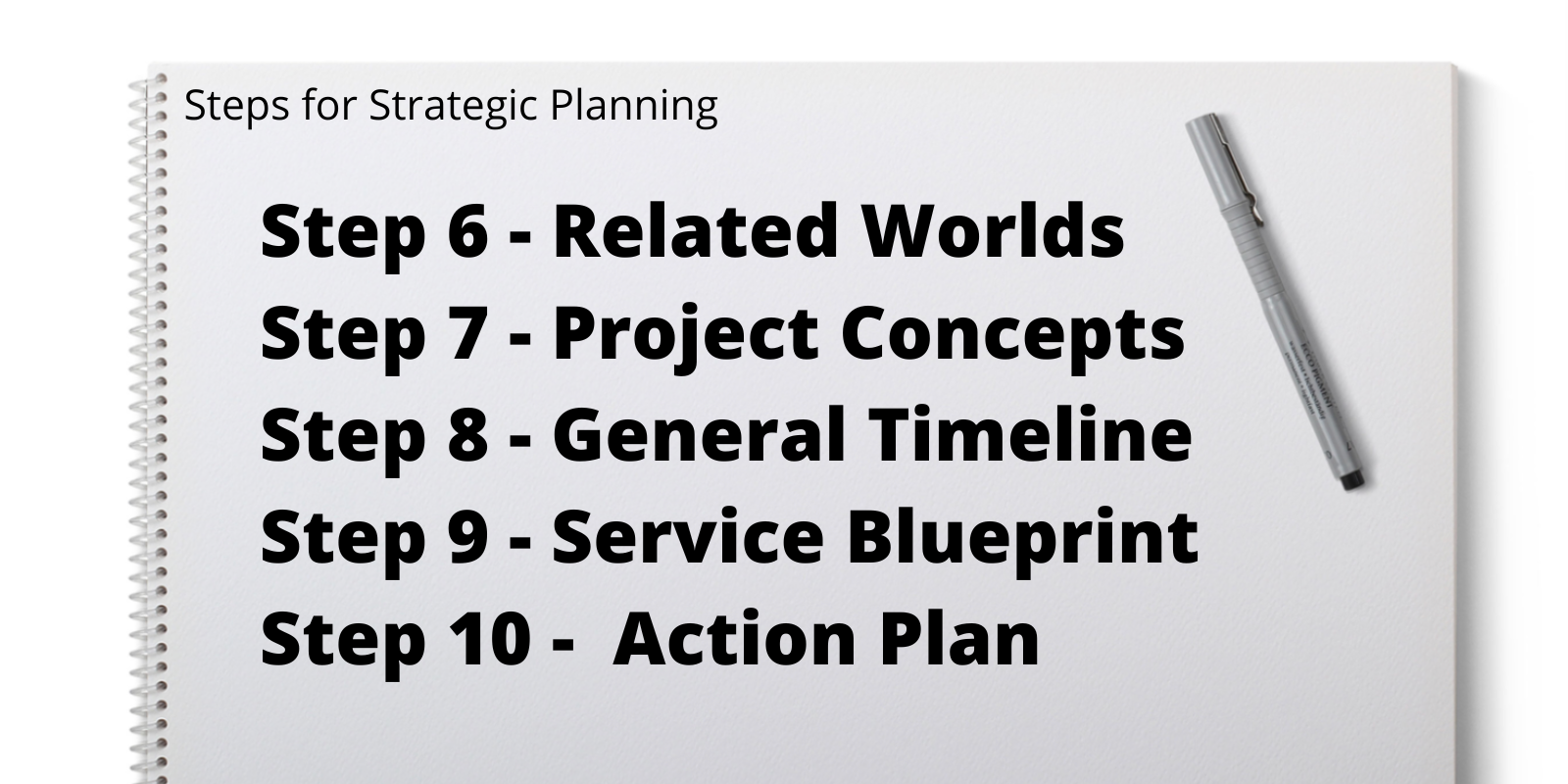What are strategic plans?
Quick definition
Strategic plans are the steps and actions necessary to make your strategy come into fruition. Strategic plans answer questions like:
What project will we start working on right away?
What tasks need to be completed?
Who is responsible for each task?
What are the due dates for the tasks?
How will we actually get to our goal?
In what order do we do things?
What will we do tomorrow?
What is the difference between strategy and strategic plans?
Strategy is high level. It’s about the long term goals (and a few other things) of where the company wants to be. Strategic plans are where the rubber meets the road and action takes place. Understanding what needs to be done today to realize our future goals.
Oftentimes teams and organizations just create a strategy (oftentimes they don’t even create a strategy, they just have a plan) and it makes it difficult for the rest of the team to know exactly what to do.
What are the main benefits of strategic plans?
The first main benefit is to help the team understand what they will ACTUALLY do in order to reach the goals and desired outcomes of the strategy.
Strategic plans create alignment. Too often teams think they are aligned and end up on very different pages. This creates fires that need to be put out in the future. Lots of time and other valuable resources are wasted when the team isn't aligned.
The team will know how to communicate better about the strategy. They know exactly what to do to show they are committed to the success of the strategy.
Strategic plans put teams in a more proactive state rather than a reactive state. The team will be on the offensive rather than defensive.
It gives the team time to think deeply about what to do rather than quick, shallow thinking.
So how do you create a strategic plan?
In this article we will share with you a quick snapshot of the steps.
Step 0 - Discovery
Before the team meets, it's extremely helpful to learn as much as you can about what you are looking to strategize about. A simple way to help with the research is to complete a SWOT analysis. This is where you identify the team or organization's strengths, weaknesses, opportunities, and threats.
Step 1 - Purpose
The team aligns on their north star. We make sure they know who they are helping and why.
Step 2 - 2-year objective
The team identifies what goal they want to hit within two years. This helps the team create a strategy that feels within reach.
Step 3 - Measurements
This team knows what to monitor so they are on the right track towards meeting their objective.
Step 4 - Critical Challenges
This is what makes a strategy different from a normal plan. If the team can identify the obstacles, then they can create better solutions to reach the objective.
Step 5 - Guiding Policies
This is how the team will generally work towards the objective. This helps the team know the guardrails around what they can and cannot do in order to reach the objective.
This is the first part of our Strategy Sprint and at this point your team will have the foundations of a strategy. Most teams and organizations end here. Leaving team members feeling confused as to what they should ACTUALLY start doing tomorrow. That’s why strategic planning sessions are so important. They help turn a strategy into action.
What Are Strategic Plans
Now we will go over the rest of our Strategy Sprint, which identifies the strategic plans for the team.
Step 6 - Related Worlds
This gets your team to think outside the box for potential solutions. The team looks into other “worlds” or organizations that do similar work but are not in the same field. For example if you want to create a productivity app, perhaps you look into a restaurant's kitchen or an ER. Places that have to be very efficient quickly. Again, this is meant just to get the creative juices flowing.
Step 7 - Project Concepts
Your team will brainstorm a variety of potential project ideas to help reach the objective. These are not fully flushed out, just the beginning of ideas.
Step 8 - General timeline
The team takes the projects they will move forward with and place them on a two year timeline. This identifies when the projects will be done and in what order. This is where teams start to get a sense of what they will be actually doing for their strategy.
Step 9 - Service Blueprint
The team maps out each step of the first project. Answering three main questions. What is the customer experience, what will staff do, what are the backend processes? All the little details of the first project will be flushed out during this step.
Step 10 - Action Plan
This is the final step of the strategic plan. Here is where the team identifies each task needed to execute the first project, when will these tasks be completed and who is responsible for each task.
At the end of these ten steps you and your team will have a clear understanding of the high level strategy and actions needed to execute the strategic plans.
What happens after the strategic plans?
Now the team is completely aligned on what needs to be done, it’s now up to them to execute the strategic plans.
We recommend the team revisit the strategy about once a quarter. Often teams will revisit once a year, which is too long. A strategy is an experiment, not an exact prediction of the future. Things will not go according to plan and adjustments need to be made. Also the team will learn along the way which can help improve the strategic plans.
We hope this helped you answer the question of what are strategic plans. If you are looking to dive in deeper we have a free resource for you. This resource helps teams know how to navigate the most overlooked part of creating a strategy!
Click the button below for your free resource!





